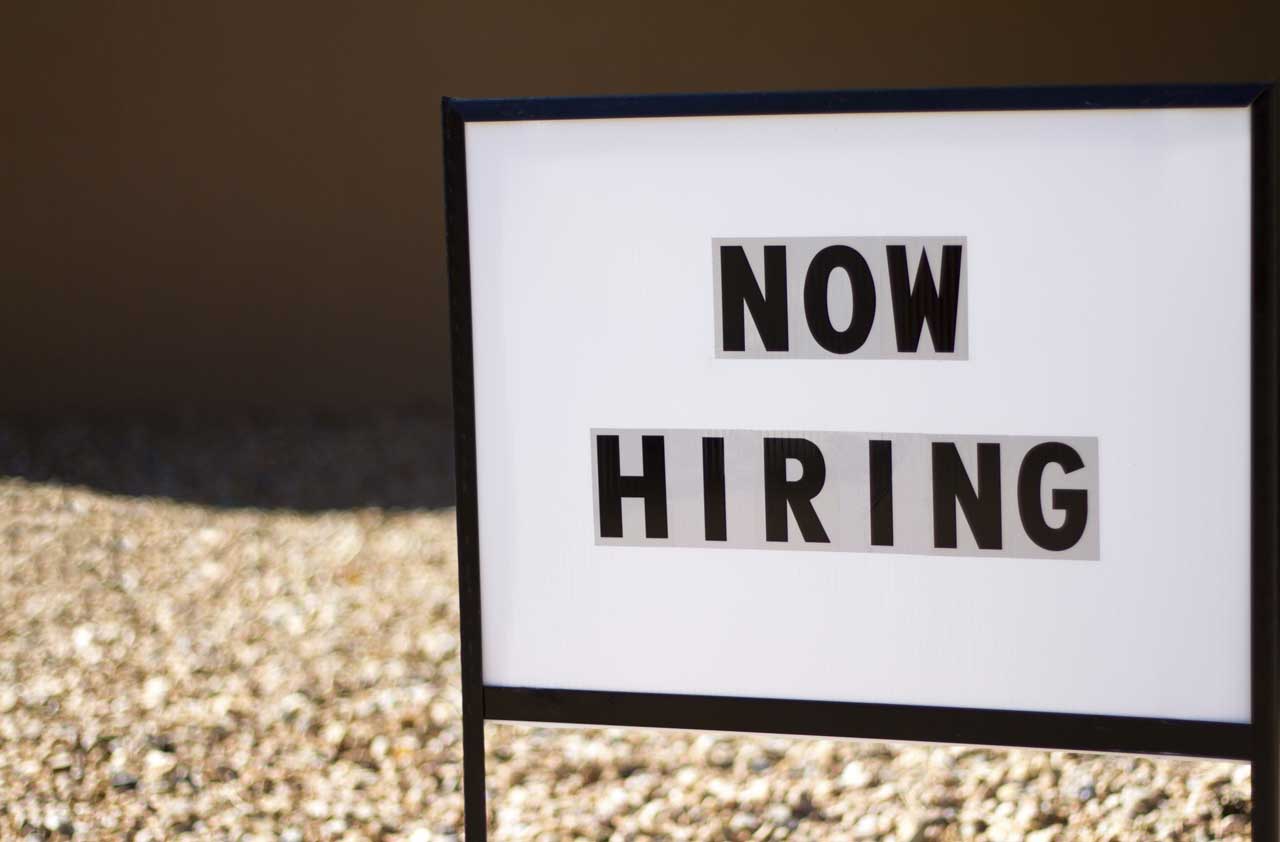7 Signs America's Economic Growth Will Keep Booming
Doom and gloom sells.


Doom and gloom sells. It’s easy to tap into people’s deepest fears and cry “the sky is falling.” And sadly, we’ve seen a lot of that ever since the financial crisis and bear market of 2007-09 reminded everyone just how bad things could get.
Take, for example, Ron Paul’s recent call for a 50% crash in stocks. Talking to CNBC, the famous libertarian cited several concerns, including the Federal Reserve waiting too long to reverse the low-interest-rate environment – an “unmanageable” situation that he fears is setting the country up for a massive financial disaster. But if you look closely at the data, America is doing well. Robust economic data has been par for the course for years now – good news for Americans on Main Street and Wall Street alike. Better still, several areas of the economy, as well as corporate financial results, continue to improve.
It’s easy to be cynical about this long-in-the tooth market rally. “This bull market has been climbing a ‘wall of worry’ for eight-plus years and counting,” says Brett Owens, Chief Investment Strategist at Contrarian Outlook. “It’s the most hated extended bull move of all time.” But as long as there’s a tangible economic backbone to this run, there’s no reason stocks can’t keep surging.
Need a little encouragement? Here are seven signs that American economic growth is alive and well, giving stocks the fuel they need to keep rallying.

Corporate Earnings Are Growing
Corporate profits not only are rising, but they’re doing so at a faster rate than they were just a year ago.
According to John Butters of financial data and research firm FactSet, 74% of companies in the Standard & Poor's 500-stock index that have reported their third-quarter results so far have posted earnings above expectations – better than the five-year average. Collectively, earnings are 4.8% better than estimates.
The blended earnings growth rate so far is 5.9%, too. That compares to expectations of 3% growth at the start of the quarter, which means profit expansion for Q3 is almost double initial estimates. While not as robust as the 15% year-over-year increase in first-quarter profits, this quarter still keeps the index on pace to easily outdo 2016, when earnings remained flat.
A promising sign looking forward: FactSet says analysts’ fourth-quarter “bottom-up” EPS estimate (“an aggregation of the median EPS estimates for all the companies in the index”) dropped by 0.8% during the first month of the quarter. That might sound negative at first blush, but this is actually a smaller first-month decline than the one-, five- and 10-year averages.

Sales Are Growing, Too
Increased profitability is nice, but it’s even more encouraging when it’s a result of actual growth, not just cost-saving measures.
So far this quarter, 66% of S&P 500 companies have announced better-than-expected revenues (again above the five-year average), according to FactSet. The index’s components have registered 5.8% sales expansion year-over-year – better than analysts’ estimates for 4.9% growth at the start of the quarter, and the highest revenue growth rate since 2012.
This is a broad-based surge, too, with nine of the S&P 500’s 11 sectors reporting sales growth so far in the third quarter.

Consumers Are Confident and Spending
Americans are feeling more confident about their financial situation. The Conference Board’s Consumer Confidence Index – a measurement of Americans’ “attitudes and buying intentions” – rose to a nearly 17-year high of 125.9 in October.
Consumers’ confidence is getting a lift from several factors, including a job market that the Conference Board says “had not received such favorable ratings since the summer of 2001.” Optimism about business conditions and the short-term economic outlook both increased during the month.
It’s not just attitude, however – it’s action. The Bureau of Economic Analysis reported that Americans’ seasonally adjusted personal consumption expenditures rose 2.7% year-over-year in September. Meanwhile, retail sales are on pace to hit 3.8% growth, and Kiplinger’s sees that improving in 2018, to 4% growth.
America’s consumers are the engine of the world’s economy, Bryn Mawr Trust CIO Ernie Cecilia says. “The consumer is the biggest part of the U.S. domestic economy, representing roughly two-thirds of GDP. An increase in consumer spending and American salaries is ultimately good for investors as it increases consumer sentiment,” he says.
Kiplinger’s believes this economic momentum will not just continue, but pick up a head of steam to 2.6% GDP growth in 2018 after a pace of 2.2% this year.

Unemployment Is Falling
People are much more economically confident when they’re actually employed, and the data looks good on that front, too.
The unemployment rate has dipped to 4.1% as of October – the lowest reading since December 2000. That’s also far lower than the average 5.79% rate between 1948 and 2017. In the past 52 weeks alone, the unemployment rate has dipped by 16%, and it’s nearly half of what it was just five years ago.
And U.S. employers still are looking for help. While job openings declined 0.9% in August, according to the Labor Department, the figure still sits at 6.1 million – slightly off July’s revised 6.14 million, which was the most open jobs since the Labor Department started tracking this statistic in December 2000.
Our own economic outlook is that we’ll see more of the same in 2018, with unemployment shrinking to 3.9% amid this tight labor market.

Americans Are Getting a Raise
This dearth of workers is nudging wage growth higher. Walmart (WMT) and Target (TGT) have made headlines over the past couple years for increasing their hourly wages, but they’re far from the only companies being forced to pay up for qualified help.
While not a robust number, average hourly earnings for private nonfarm payrolls did grow at an annual pace of 2.4% in October. While wage growth has been stuck around 2.5% for a couple years, the Kiplinger forecast is for an expansion to 3% growth by the end of 2018.
Another promising sign: Median weekly earnings for full-time wage and salaried workers climbed 3.9% during the third quarter of the year.

Corporate Bankruptcies Are Drying Up
The number of U.S. companies going bust is going down.
According to data from the American Bankruptcy Institute, through the end of September, total bankruptcies in 2017 were down slightly from 2016’s number, and well off the pace seen during the Great Recession. That includes a 0.8% year-over-year decline in Chapter 7 bankruptcies – when companies liquidate their assets to pay back debtors and essentially shut down.
What do fewer bankruptcies tell us about the American economy? In short, companies are having an easier time paying their bills and workers, and remaining solvent. We’re also seeing this in corporate bond default rates. According to Moody’s, even the riskiest companies are having an easier time – high-yield bond defaults declined to a three-year low of 3.3% during the third quarter.
"A combination of strong liquidity and economic growth will help to stave off defaults, supporting a continued slide of the default rate to 2.3%, projected a year from now,” Moody’s Senior Vice President John Puchalla says.

Exports Are Recovering
The final piece of the puzzle is a global one: international trade.
America’s trade deficit with the rest of the world crawled slightly higher in September, to $43.5 billion. However, that figure still is down by about 11% from where the deficit stood at the beginning of 2017.
There are good and bad ways to lower a trade deficit. You can cut it by increasing imports or decreasing exports, which aren’t necessarily great for America’s manufacturers and retailers. While imports did rise 1.2% year-over-year to $240.3 billion in September, exports weren’t far behind, climbing 1.1% to $196.8 billion – a month after exports jumped 4.6% to $195.3 billion. Just keep watch on this front: Kiplinger’s current outlook is for a 6% widening of the trade gap by year’s end.
For now, though, companies with large multinational operations are benefiting from this year’s narrowing gap. According to FactSet, companies with more than half their sales occurring outside of America saw revenues rise 6% in the second quarter of 2017, while companies with less than half of their sales abroad saw revenues rise just 4.7%.
Profit and prosper with the best of Kiplinger's advice on investing, taxes, retirement, personal finance and much more. Delivered daily. Enter your email in the box and click Sign Me Up.

-
 CD Maturing Soon? Here's What to Do Next
CD Maturing Soon? Here's What to Do NextThese strategies of what to do when you have a CD maturing soon will have you maximizing returns even with rate cuts.
-
 How to Make 2026 Your Best Year Yet for Retirement Savings
How to Make 2026 Your Best Year Yet for Retirement SavingsMake 2026 the year you stop coasting and start supercharging your retirement savings.
-
 You Saved for Retirement: 4 Pressing FAQs Now
You Saved for Retirement: 4 Pressing FAQs NowSaving for retirement is just one step. Now, you have to figure out how to spend and maintain funds. Here are four frequently asked questions at this stage.
-
 What to Expect from the Global Economy in 2026
What to Expect from the Global Economy in 2026The Kiplinger Letter Economic growth across the globe will be highly uneven, with some major economies accelerating while others hit the brakes.
-
 Shoppers Hit the Brakes on EV Purchases After Tax Credits Expire
Shoppers Hit the Brakes on EV Purchases After Tax Credits ExpireThe Letter Electric cars are here to stay, but they'll have to compete harder to get shoppers interested without the federal tax credit.
-
 The Economy on a Knife's Edge
The Economy on a Knife's EdgeThe Letter GDP is growing, but employers have all but stopped hiring as they watch how the trade war plays out.
-
 Japan Enters a New Era of Risk and Reform
Japan Enters a New Era of Risk and ReformThe Kiplinger Letter Japan has entered a pivotal moment in its economic history, undertaking ambitious policy and structural reforms to escape from decades of stagnation.
-
 After Years of Stagnant Growth, Hope Emerges for EU Economy
After Years of Stagnant Growth, Hope Emerges for EU EconomyThe Kiplinger Letter Can a German fiscal push outweigh French political peril?
-
 Trump's Economic Intervention
Trump's Economic InterventionThe Kiplinger Letter What to Make of Washington's Increasingly Hands-On Approach to Big Business
-
 AI Start-ups Are Rolling in Cash
AI Start-ups Are Rolling in CashThe Kiplinger Letter Investors are plowing record sums of money into artificial intelligence start-ups. Even as sales grow swiftly, losses are piling up for AI firms.
-
 What is AI Worth to the Economy?
What is AI Worth to the Economy?The Letter Spending on AI is already boosting GDP, but will the massive outlays being poured into the technology deliver faster economic growth in the long run?
